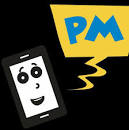In today’s digital world, many people spend hours each day staring at screens—whether it’s for work, entertainment, or communication. The impact of extended screen use on eye health is well-documented, with a range of symptoms that can affect productivity and well-being. Similarly, exposure to loud noises in daily life can also take a toll on hearing health, often leading to long-term damage that may not be immediately noticeable.
Ophthalmologist Karen M. Rudo, MD, and Primary Care Physician Joseph M. Parise, DO, share their expert insights on how modern lifestyles, dominated by screen time and noise, are affecting our eyes and ears. Here’s a detailed look at the potential harm and how to protect yourself from long-term damage.

How Screen Time Affects Your Eyes
The Rise of Screen-Related Eye Strain
In the digital age, screen-based activities—whether working on a computer, browsing on a tablet, or texting on a smartphone—have become the norm for many individuals. However, extended screen time can lead to a condition known as digital eye strain or computer vision syndrome. This condition is characterized by discomfort in the eyes, headaches, and blurred vision.
Dr. Rudo explains that when you look at a screen for an extended period, your blink rate slows significantly. Blinking is essential for moisturizing the eyes and preventing them from becoming dry. As a result, prolonged screen time can lead to dry eyes, discomfort, and even blurred vision when you look away from the screen.
Symptoms of Digital Eye Strain:
-
Dry eyes
-
Blurred vision
-
Eye fatigue
-
Headaches
-
Neck and shoulder pain
Preventing and Reducing Eye Strain
To combat the discomfort caused by prolonged screen time, Dr. Rudo suggests several strategies to reduce eye strain and protect your vision:
1. Follow the 20-20-20 Rule
The American Academy of Ophthalmology recommends the 20-20-20 rule to reduce eye strain. For every 20 minutes of screen time, take a 20-second break and look at something 20 feet away. This simple technique can help give your eyes the rest they need.
2. Adjust Screen Settings
Modern devices often emit a blue light, which has been shown to disrupt sleep patterns. To minimize this effect, adjust your device settings to reduce blue light exposure, especially in the evening. For added protection, blue light blocking glasses are available and may be particularly beneficial for those under 50 years old.
3. Use Artificial Tears
If your eyes feel dry after long screen sessions, Dr. Rudo recommends using artificial tears to keep your eyes moist. This can help prevent discomfort and reduce the risk of developing chronic dry eye.
4. Consider Specialized Glasses
For those who need reading glasses or bifocals, special computer glasses can be an excellent solution. These glasses are designed specifically for close-up work and can help reduce eye strain when using digital devices for long periods.
The Impact of Noise on Your Ears
Hearing Loss: A Growing Concern
Many people are unaware of the dangers posed by exposure to loud noises in their everyday environments. According to Dr. Parise, hearing loss is a common issue in the U.S., affecting around 48 million people in one or both ears. While some degree of hearing loss is hereditary, much of it can be attributed to environmental factors, especially exposure to loud sounds over long periods.
Sound levels are measured in decibels (dB), and prolonged exposure to sounds above 85 dBA (adjusted decibels) can cause permanent damage to the inner ear structures.
Common Noise Levels:
-
Normal conversation: 60 dBA
-
Hair dryer: 60–95 dBA
-
Heavy traffic: 85 dBA
-
Rock concert: 115 dBA (just 28 seconds of exposure can cause damage)
Preventing Hearing Damage
Hearing damage often occurs gradually, and by the time symptoms like ringing in the ears or difficulty understanding speech appear, the damage may already be irreversible. Dr. Parise emphasizes the importance of taking steps to protect your hearing.
1. Use Ear Protection
When exposed to high noise levels, such as at concerts or in noisy work environments, earplugs or noise-canceling headphones can reduce the risk of hearing loss.
2. Lower the Volume
Be mindful of the volume when using headphones or earbuds. Keeping the volume at a moderate level can prevent damage to your eardrums. It’s also a good idea to take regular breaks from listening to music or podcasts to give your ears a rest.
3. Avoid Extended Exposure to Loud Noises
Prolonged exposure to sounds above 85 dBA should be minimized. In environments like construction sites or factories, ear protection should be worn at all times. Even heavy traffic and vacuum cleaners can contribute to hearing damage over time.
Simple Tips for Maintaining Healthy Eyes and Ears
For Your Eyes:
-
Take regular breaks using the 20-20-20 rule.
-
Reduce blue light exposure by adjusting screen settings.
-
Use artificial tears to prevent dry eyes.
-
Consider specialized glasses for computer use.
-
Keep a proper distance from your screen to avoid eye strain.
For Your Ears:
-
Use ear protection in noisy environments.
-
Lower the volume on your headphones or earbuds.
-
Take breaks from loud sounds to give your ears a rest.
-
Avoid noisy environments when possible, and protect your hearing.
FAQs
How can I relieve eye strain from screen time?
To relieve eye strain, follow the 20-20-20 rule: every 20 minutes, take a 20-second break and look at something 20 feet away. Also, adjust your screen settings to reduce blue light.
Can using my phone at night affect my sleep?
Yes, blue light emitted from screens can interfere with your sleep patterns. Reducing blue light exposure or using blue light-blocking glasses can help.
How do I know if I have hearing loss?
If you experience difficulty hearing people from a few feet away, notice buzzing sounds in your ears (tinnitus), or struggle to understand speech, you may have hearing loss.
What is the best way to protect my ears from loud noises?
Wear earplugs or noise-canceling headphones in noisy environments, and lower the volume on headphones to prevent damage to your hearing.
How can I prevent eye strain when working on a computer?
Take regular breaks using the 20-20-20 rule, adjust your screen settings, and consider computer glasses for added protection.




